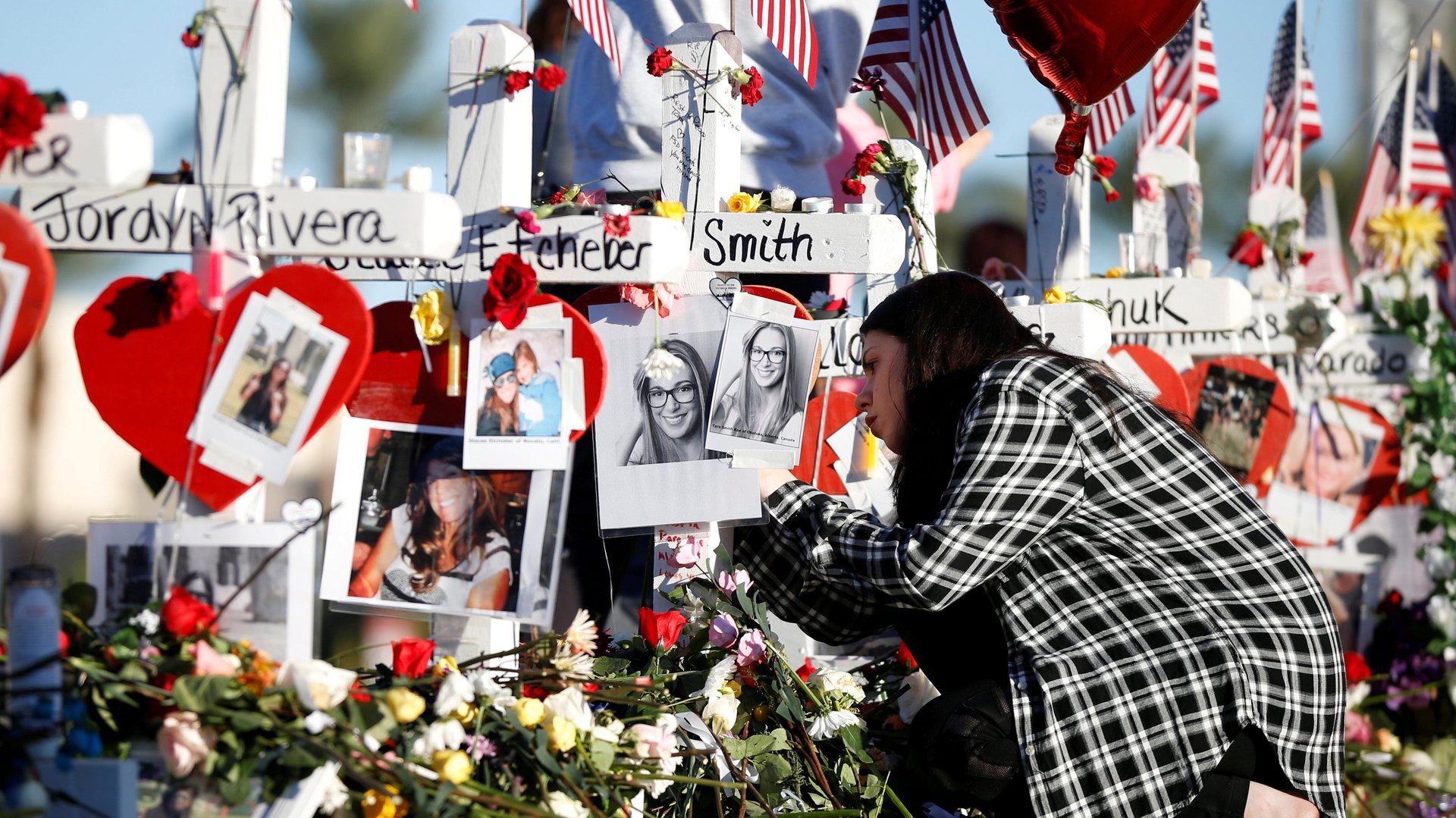Violence in the US isn’t just tragic—it’s a public health crisis
Like most Americans, I’m incredibly saddened by the mass shooting in Las Vegas. Not just because of the unnecessary loss of life, but because the escalating violence in this country is starting to feel like our new normal. As a parent, and as a doctor, I spend long days easing fears and finding solutions to problems. Seeing violent acts like the Pulse Night Club shooting, the attack on children in Newtown, and the mass shooting in Las Vegas, the widespread violence in our communities is frightening. I know I’m not alone in my frustration at seeing these tragedies unfold more and more without concrete action to prevent these types of violent acts in the future. That said, this increase in violence is a complex and systemic issue and we all have a role to play in implementing change.


Like most Americans, I’m incredibly saddened by the mass shooting in Las Vegas. Not just because of the unnecessary loss of life, but because the escalating violence in this country is starting to feel like our new normal. As a parent, and as a doctor, I spend long days easing fears and finding solutions to problems. Seeing violent acts like the Pulse Night Club shooting, the attack on children in Newtown, and the mass shooting in Las Vegas, the widespread violence in our communities is frightening. I know I’m not alone in my frustration at seeing these tragedies unfold more and more without concrete action to prevent these types of violent acts in the future. That said, this increase in violence is a complex and systemic issue and we all have a role to play in implementing change.
According to the Journal of the American Medical Association, gun-related deaths in 2014 were responsible for the same number of deaths in the United States as motor vehicle accidents. Shootings in which four or more people are killed occur almost daily. The simple fact is, this issue isn’t going away. In fact, it continues to grow and spread like a chronic disease.
To help make strides in changing our current environment, it’s time we start treating violence like a public health issue. If we look at violence like a chronic condition, the first thing we must examine are the underlying factors that may lead to violent behavior in the first place. Violence in our country doesn’t have to be our new normal.
Kids growing up in inner city environments see the highest incidences of violence in our country. There’s also an association between neighborhood violence and biological stress in children. Even simple things, like street lighting, marked crosswalks, public transportation and illuminated walk signs, are all associated with decreased odds of homicide in a given neighborhood.
We also know that gun violence is contagious. Researchers at Yale recently completed a study that shows violence often happens in cascades within social networks. Their study showed that an individual within these social networks was at the greatest risk of being shot within 125 days after their “infector,” the person most responsible for exposing them to gun violence, was the subject of gun violence themselves.
While we’ve known about many of these issues for a long time, it’s time to put measurable programs in place to address them. We must shift our focus to combatting social determinants of health, like residential segregation, income inequality and built environment, that can contribute to violence and violent behavior.
We talk about equality every day, but the fact is your neighborhood block or your zip code can mean the difference between living like it’s 2017 or 1917. It’s because factors like the built environment around you–those illuminated walk signs and marked crosswalks–access to quality education, and health equity all play a role in a person’s overall health, life expectancy and even the likelihood that they will be exposed to violence.
Community programs and resources can help provide individuals with skills to manage conflicts peacefully–without violence. For example, the Kansas City Missouri Health Department is doing this through their Aim4Peace program, a grassroots approach where its members conduct conflict resolution sessions that lead to positive outcomes. Their work has been recognized through the Aetna Foundation’s Healthiest Cities & Counties Challenge.
We also see violence play out more often when people can’t address critical health problems at the right time. This can lead to an increase in substance abuse disorders, behavioral issues and mental illness–which can be factors in violent behavior. Many times, the same disparities that lead to environmental and residential segregation also lead to inequities in access to care at the right time. By the time help becomes available, it may be too late.
By addressing the environments surrounding our neighborhoods, we can begin to pick up the pieces to help curb rates of violence in our country. Combatting poor living conditions and unsafe community spaces should be step one, and it can start with community programs doing simple things like cleaning up our parks, installing working street lamps and building proper and safe infrastructure.
Violence is a complex issue. While our elected officials work together to find common ground and update policies, the public health community has an important role to play here as well. Through community-based solutions, a combination of conflict resolution, education and improving our environments, we can address health disparities, improve economic circumstances and help reduce violence in our communities.